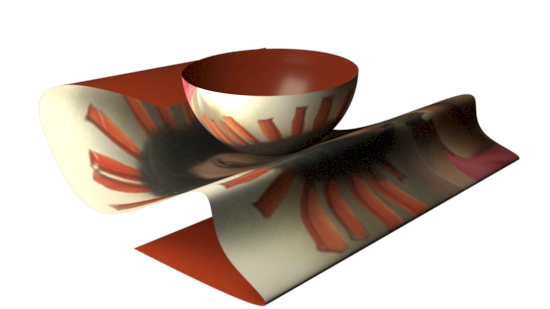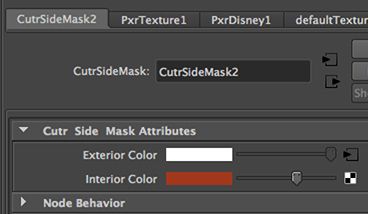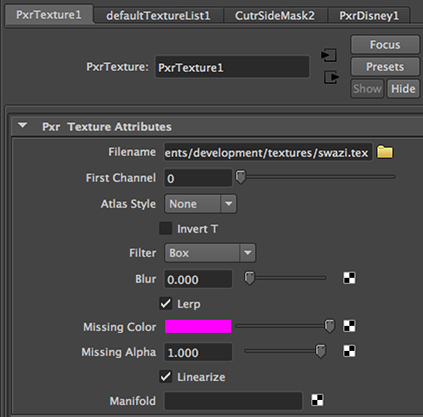Overview
This page demonstrates how built-in variables can be accessed from a custom RixPattern. The code shown in listinga 1 and 2 are for a node called CutrSideMask. CutrSideMask outputs a color that depends on the value of the dot product of the surface normal and the (camera) viewing vector.

Figure 1
By recognizing the difference between the front and the rear of a surface the node can be used to achieve moderately interesting effects. For example, figure 1 shows a texture map applied to the outward facing surfaces of a nurbs patch and a nurbs hemisphere.

Figure 2
The shading network and the attribute editor for the CutrSideMask and pxrTexture nodes are shown in figures 3 and 4.

Figure 3

Figure 4